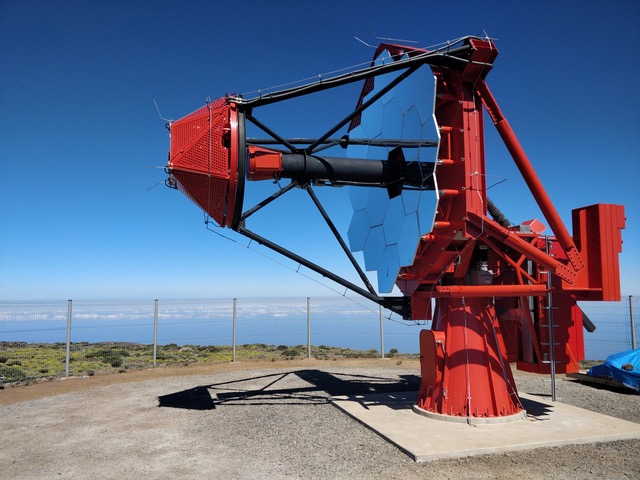Ranked nationally by the Ministry of Higher Education and Research among the very largest research infrastructures, the international CTAO project receives financial support from France. The commitment focuses in particular on the provision of 12 electromechanical structures for the SSTs, drawing on the scientific and technical expertise of the Paris-PSL Observatory, in partnership with the CNRS.
France’s contribution to the CTAO is part of a broader program that ultimately aims to deploy two unprecedented networks of telescopes of different sizes, one in the northern hemisphere (in Spain’s Canary Islands) and the other in the southern hemisphere, in Chile.
The objective of the CTAO is to detect the highest-energy gamma rays (up to 300 TeV) emitted by galactic sources (supernova remnants, pulsar wind nebulae, etc.) and extragalactic sources (active galactic nuclei, gamma-ray bursts, etc.).
To cover energies from 20 GeV to 300 TeV, the CTAO will consist of telescopes of three different sizes :
- small (4 m diameter, SST for “small-sized telescope”),
- medium (12 m, MST for “medium-sized telescope”),
- large (23 m, LST for “large-sized telescope”).
When fully operational (“alpha configuration”), the CTAO will include 4 LSTs in the north and 2 in the south, 9 MSTs in the north and 14 in the south, and 37 SSTs in the south.
While the first of the large telescopes (LST-1) is in the commissioning phase in La Palma and is already delivering impressive scientific results (https://www.ctao.org/news/lst-1-discovers-the-most-distant-agn-at-very-high-energies/ ), operations with intermediate networks are expected to begin in late 2026.
Leading technological expertise
Since 2015, the Paris Observatory-PSL has housed on its Meudon campus the French prototype of a small “Schwarzschild-Couder” telescope, which it developed based on a pioneering technological concept involving two mirrors. Thanks to its exceptional optical performance, this approach was chosen for the design of the SSTs, with a design proposed by the Italian team and improved by the engineers and researchers at the Paris-PSL Observatory.
The recently awarded contract marks the start of production for the 12 electromechanical SST structures, each measuring 4 meters in diameter, promised by France. It is the result of a long-term effort led by teams from UNIDIA and LUX, with support from the purchasing department of the CNRS DR5 delegation.
The contract was won by an industrial consortium led by Dal Ben SpA, which was already involved in the manufacture of the first 14 Italian SSTs, managed by INAF for the Italian market. For the French market, the entity is partnering with its subsidiary Dal Ben SAS in Lyon, ensuring that nearly 49% of industrial FTE will come from a French company.
Production of the structures for the French market will begin after factory validation of the first telescope for the Italian market, scheduled for the end of 2025. The arrival of the first structure from the French market is expected at the end of 2026 at the CTAO site in Chile. The telescope, assembled from this structure, will thus be part of the first intermediate configuration of the CTAO’s southern network, consisting of two MSTs and five SSTs. The 12 structures will be completed with segmented mirrors and SiPM-based cameras, supplied by international partners within the “SST consortium.”
Alongside Italian SSTs and large and medium-sized telescopes, the first SSTs supplied by France will be part of the preliminary networks (“system releases”), with the first data expected in 2027.
Beyond its technological contribution to the development of SSTs, the Paris Observatory - PSL plays a central scientific role in the CTAO, as a major astrophysics research institution, alongside more than 150 research institutes from 25 countries participating in the project. In particular, it is involved in the development of future observational programs and the preparation of high-level data archiving and distribution.
Observations of the most extreme sources in the Universe
CTAO’s unmatched sensitivity and energy coverage promise significant advances in LUX’s research on blazars and other active galactic nuclei, gamma-ray bursts (GRBs), and the acceleration of cosmic rays in “PeVatrons.”
The SSTs will cover the most extreme energies (from a few TeV to 300 TeV) and will enable precise study of the spectral shapes of “PeVatrons” and “extreme” blazars in order to understand the mechanisms of particle acceleration at energies unattainable in laboratories.



